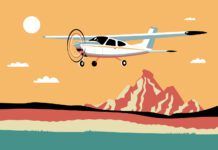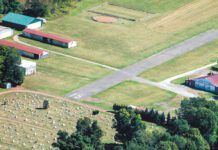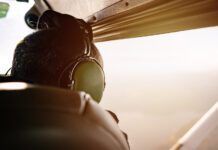There are many stories about the horrible freeze we had in Texas this year, but I think this one of the funniest.
I planned a flight to McAllen, TX, from the Lago Vista Rusty Allen Airport in the Austin area, and the runway was frozen over and covered with snow. Having grown up in North Dakota, I was, of course, undeterred. I pushed my Viking through the muck and was off. There was a low stratus layer at 3000 feet. so I called Austin Approach for a pop-up clearance. I dialed in the frequency and heard nothing. I waited a few moments then said, “Austin Approach, November 5l Lima Hotel.”
“51 Lima Hotel, Austin Approach. I see you filed a flight plan for McAllen yesterday. Weather too bad, eh?”
I replied, “How did you know that?”
He said, “Well, you are the only person I’ve talked to in three days!”
I stifled a laugh and said, “Suppose I could get a pop-up through this layer?”
He said, “Sure, would you like a clearance direct KMFE?”
This never happens as the route goes through San Antonio and many MOAs on the way. I guess it was my lucky day.
David Alger
Lago Vista, TX
Some time ago, we were heading home following a trip across Canada. We were in the sunshine, high above the clouds near Moose Jaw, Saskatchewan, with its adjacent air base and the home of the RCAF demonstration team, The Snowbirds.
Just then, ATC called up, “Comanche C-FLHV, traffic for you at your 10-o’clock. The Snowbirds will be climbing through the cloud deck, levelling off a couple of thousand feet below you, then crossing in front and below you, left to right.”
Moments later, they burst up through the undercast in a vertical climb in tight formation, then immediately levelled off, maintaining their tight formation all the while. Then, once clear of us, abruptly switched back to their vertical climb up to the flight levels and off to their destination.
What a beautiful example of how lucky we are to be among the tiny fraction of the world’s population to be able to fly. After all, how many people get to watch the Snowbirds perform from above?
Don Ostergard
Drumheller, Alberta, Canada
In the summer of 1970, at the ripe old age of 16, with a total of 27 hours (13 solo), I convinced my instructor to let me fly my family’s Cessna 140 from Atlanta to Panama City for my first long solo cross country. My instructor, a former Air Force pilot and my Dad, would drive down ahead and meet me there. The flight down was uneventful.
The morning of the return flight, following Dad’s instructions, I told Ground Control I was a student pilot, unfamiliar with the airport, and needed “progressive instructions.”
The controller said, “OK, taxi runway…”
I paid little attention to the rest since I was to get “progressive.” No read-back was requested; off I went.
I had taxied across the active runway before his next call, “77021 you just crossed an active runway! Where are you going?”
Me: “I thought you would tell me when to turn.”
Ground: “77021 turn around right there and taxi back. I will tell you when to turn.”
Me: “Roger”
When I was just about all the way across the active again he said, “77021 turn right now.”
I obeyed immediately even though I thought it unusual to taxi up a runway. I was just starting to admire the nose of an Eastern Airlines 727 pointed at me about 1500 feet ahead and holding for takeoff when the radio erupted, “77021 what the #@*% are you doing? You are supposed to be on the taxiway! Turn around and get off the runway immediately!”
In my sixteen-year-old, and now rattled, mind the fastest way to comply was to add full power and leave.
I did.
Seconds later, and now very loudly, “77021…..” I don’t know the rest because, sensing it would not be something I wanted to hear, I did the next reasonable thing—turned the radio off and headed north. “Aviate first, communicate later.” Dad always said.
I never heard from the FAA about the incident. The Eastern lads probably had a good laugh, but I’m sure the control tower was filled with paint-blistering oaths.
Scott Riley
Augusta, GA





